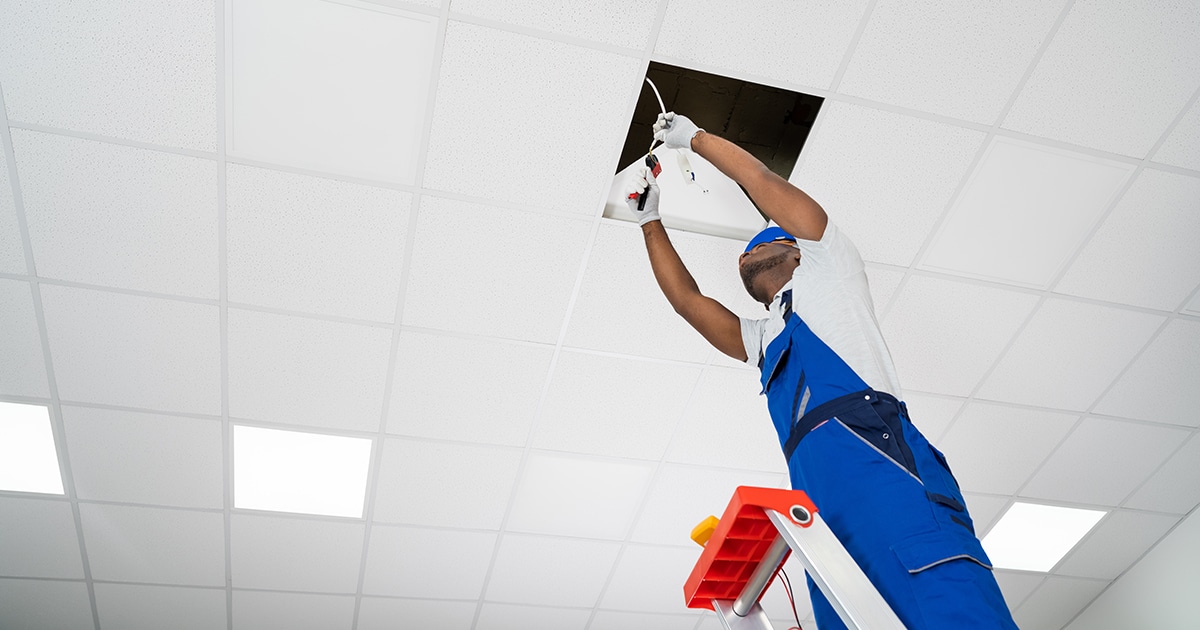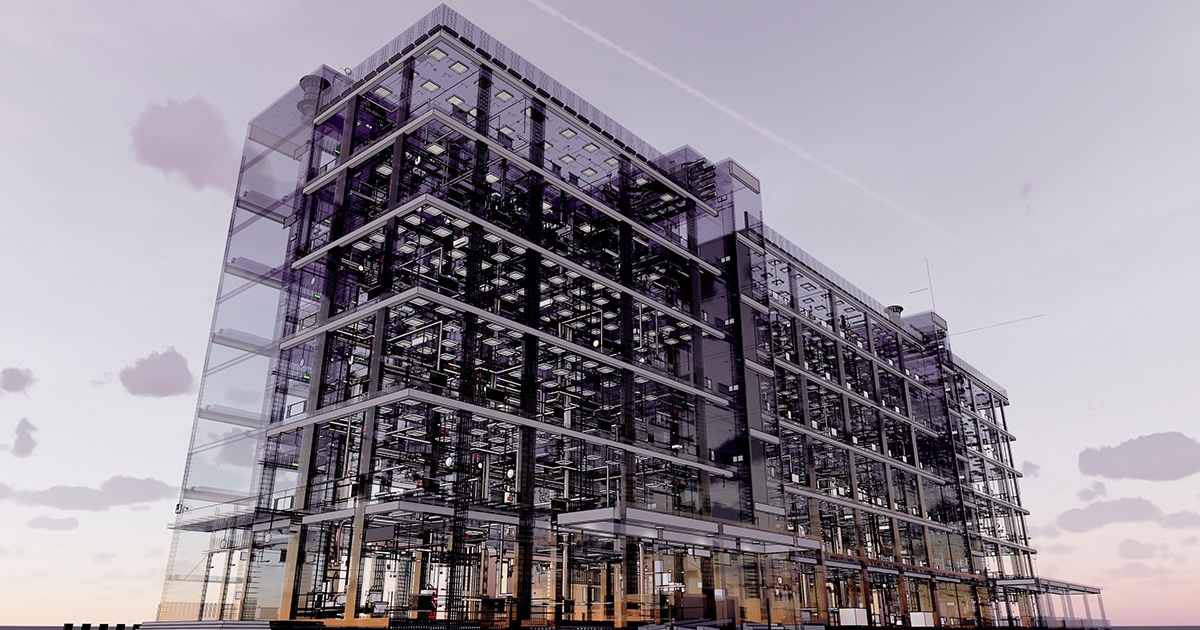Corrective maintenance (also called reactive maintenance) is the most common maintenance strategy because it is the simplest to apply and it is still widely used today for non-critical installations and infrastructure in real estate. It can be either as an organization’s main maintenance strategy or as a complementary tool to preventive maintenance.
When corrective maintenance is used on its own, it is also known as “run-to-failure” maintenance. This approach is best suited for low-priority equipment, without which the company’s operations can continue running normally. It is also a viable approach for non-critical assets where consistent monitoring or maintenance may ultimately prove more expensive than reparations or substitutions when malfunctions occur.
In any case, companies that want to improve the productivity of their real estate installations and equipment have every interest in turning to CMMS software to manage their corrective maintenance. The benefits of this approach will be all the more remarkable if they choose a new-generation mobile solution.
Corrective maintenance interventions
In practice, corrective maintenance interventions in real estate take the form of:
- Troubleshooting actions on building installations, which aim to quickly – but temporarily – restore a faulty piece of equipment to working order;
- Final repairs, to restore the original performance of a piece of equipment.
Strengths and limitations of real estate corrective maintenance
Corrective maintenance is the oldest strategy used in building and workspace management, as it is the simplest and most immediate response to malfunctions and breakdowns.
The easiest strategy to apply
This simplicity is the main advantage of corrective maintenance. Indeed, it does not require any particular software or the elaboration of a maintenance plan. As soon as a breakdown occurs on equipment, technicians intervene and repair it, then possibly order spare parts if needed.
This is why, despite the appearance of new maintenance management tools and new strategies, many companies, especially small and medium-sized businesses, continue to use only or mainly corrective maintenance to maintain their real estate installations.
Does preventive maintenance make corrective maintenance obsolete?
With technological and industrial progress, new tools and new theories of maintenance management have appeared, allowing the emergence of preventive maintenance strategies. Most large companies have now implemented this type of practice, as it allows them to optimize the maintenance of their equipment by anticipating breakdowns and malfunctions.
Corrective maintenance, however, is still relevant in real estate for two main reasons. On the one hand, small companies do not necessarily have the desire or the interest to implement a preventive maintenance strategy. On the other hand, even companies that do use preventive maintenance sometimes have to deal with unforeseen breakdowns.

Optimize your real estate corrective maintenance with CMMS
Although it is the simplest to apply, corrective maintenance can be optimized by adopting a CMMS, i.e., a Computerized Maintenance Management System.
Software to improve corrective maintenance
The concept of CMMS appeared when companies started to use an Excel-type spreadsheet to keep a history of maintenance interventions. Their goal was then to analyze these interventions to improve their organization.
The arrival on the market of software dedicated to maintenance represented a clear advance. CMMS is indeed specifically designed for maintenance management and provides functions geared towards this goal, such as:
- Management of maintenance interventions (reports, history);
- Management of building installations (data sheets, inventory);
- Spare parts management;
- Management of maintenance teams (planning, scheduling, skills-based task distribution);
- Development of KPIs (Key Performance Indicators);
- Monitoring of SLAs (Service Level Agreements).
What are the advantages of CMMS for corrective maintenance?
Adopting CMMS software to manage corrective maintenance in real estate has many advantages for a service company.
On the one hand, such software allows for better traceability of interventions and access to their history at any time. The technicians thus have a much better knowledge of the behavior of the installations and infrastructures, which enables them to be both more precise and faster in their diagnosis of breakdowns.
In addition, the possibility of consulting the technical data sheets and the procedures to follow at any time is very beneficial, especially in the case of a complex intervention to which the technicians are less accustomed. This represents a significant time-saving.
Finally, the use of a CMMS makes it possible to analyze breakdowns, particularly those that are recurrent. It is then possible to take appropriate measures to deal with them, for example by scheduling inspection visits or by changing certain parts of the equipment.
Which CMMS to choose?
The benefits of adopting a CMMS depend in part on the software chosen. There are several main types of solutions:
- “Traditional” on-premises software, which is purchased and installed on internal servers, accessible only from dedicated workstations;
- Newer solutions, in SaaS mode (by taking out a monthly or annual subscription), accessible from any device connected to the Internet (computer, tablet, smartphone).
- CMMS+ solutions leveraging smart building technologies and BIM models
Modern solutions offer much greater advantages than older generation software, thanks to the possibility of accessing them at any time and from anywhere, and of automatically reporting breakdowns thanks to the smart building.
Even in the case of real estate corrective maintenance, the adoption of CMMS software allows to facilitate and optimize the work of the maintenance teams. Choosing a solution that is both innovative and adapted to corrective maintenance will drastically increase the productivity of building maintenance and facility managers. In addition, such a solution makes it possible to implement a preventive maintenance strategy in parallel. You can then partially anticipate breakdowns, improving the overall experience of the building occupants.
There are a few key factors to consider when evaluating CMMS software. We created an infographic that provides guidance for taking a comprehensive approach, narrowing down possible choices, and avoiding the pitfalls. Check it out now.
Frequently asked questions
Corrective maintenance designates a quick reaction to a problem, the outcome is often the repair or change of the building’s installations. Preventive maintenance, on the other hand, is planned upstream in order to anticipate future problems, often by means of a condition assessment.
The use of CMMS software for the management of corrective maintenance is advantageous for a company as it facilitates:
– The traceability of equipment breakdowns.
– The smooth operation of maintenance-related processes.
– Reliable and up-to-date KPI reporting.









